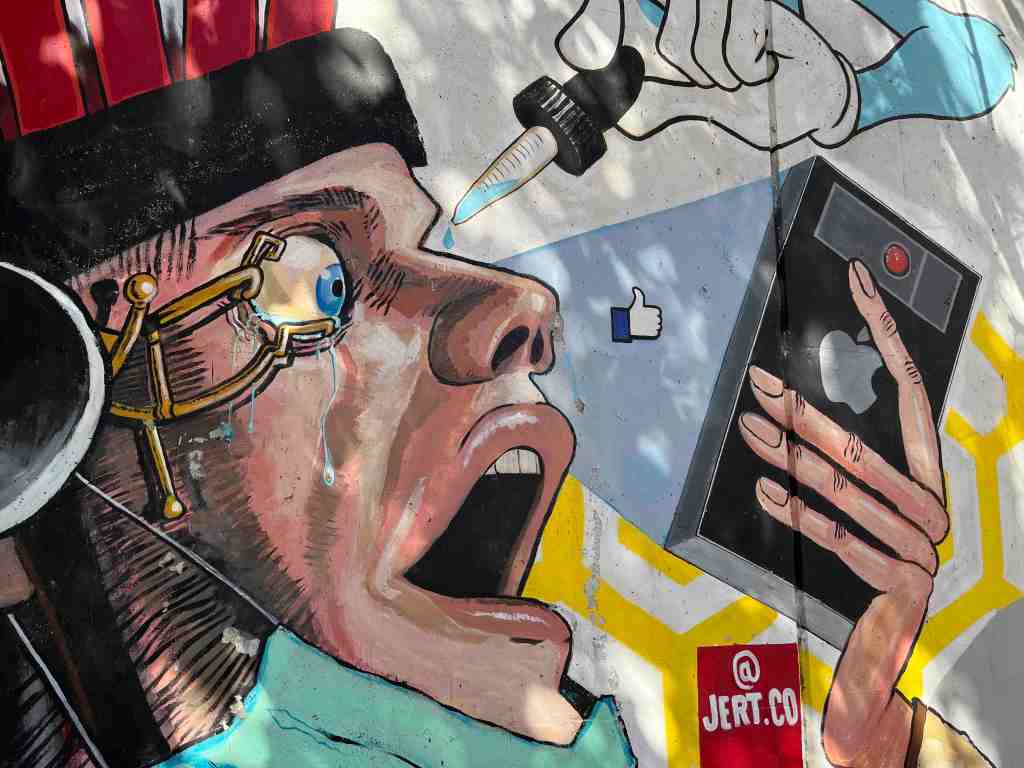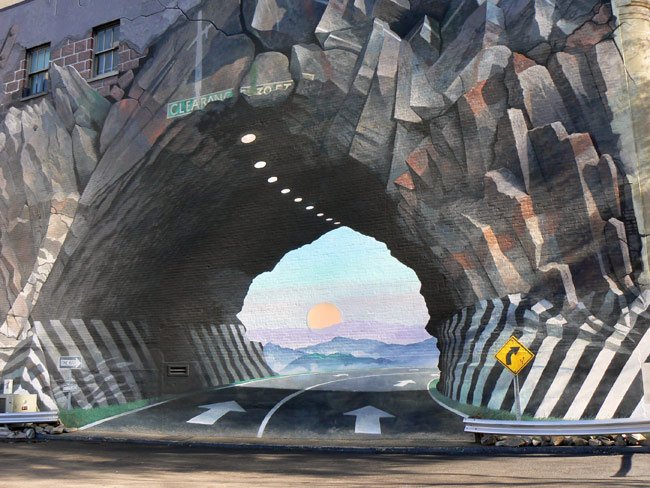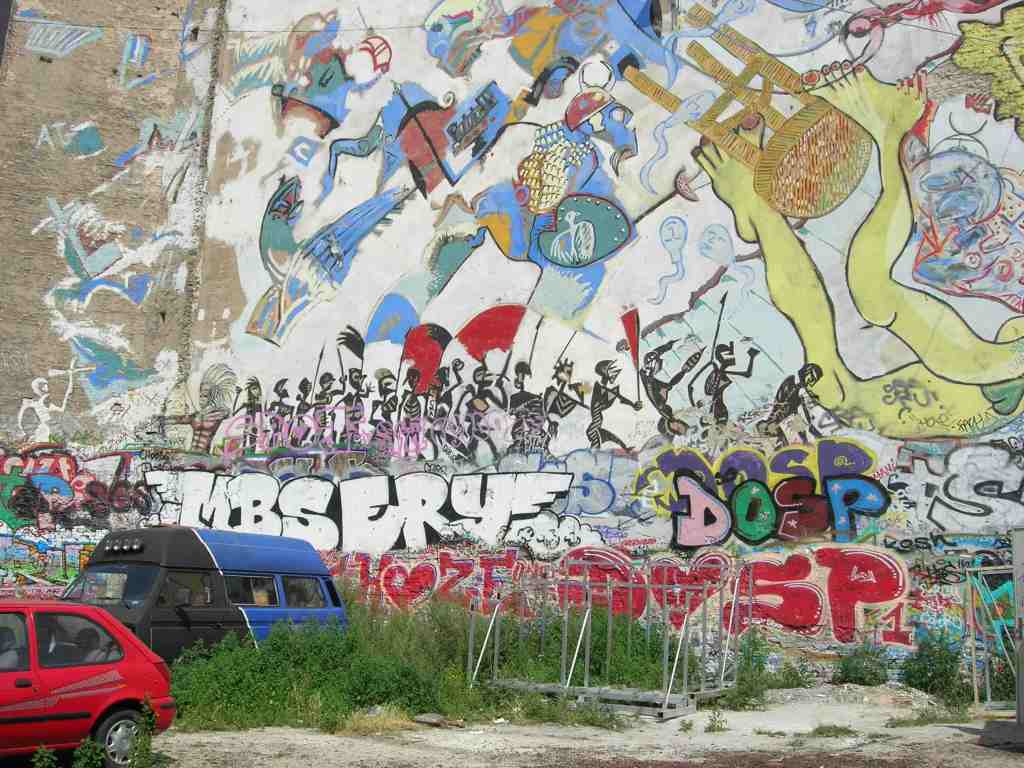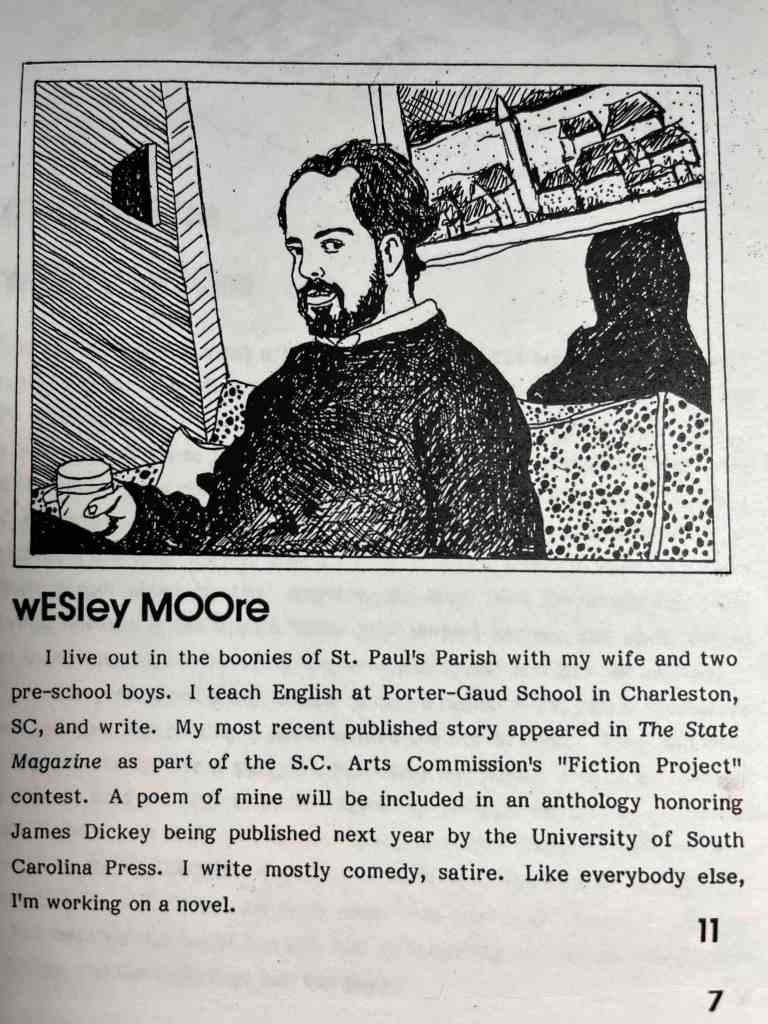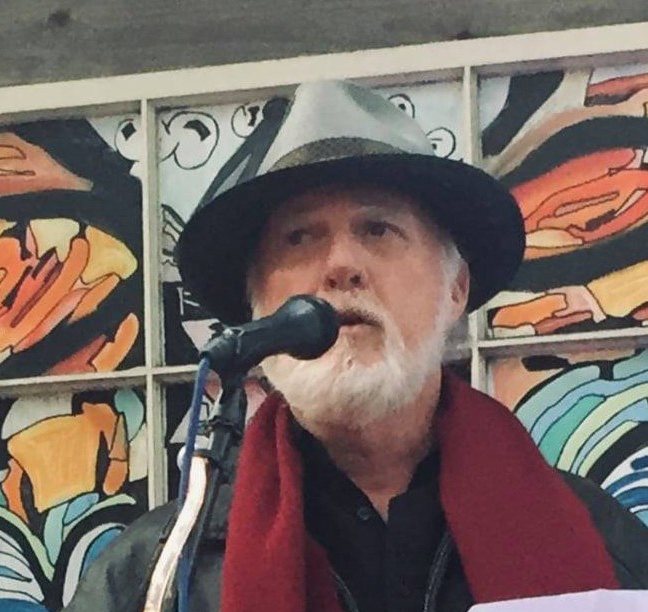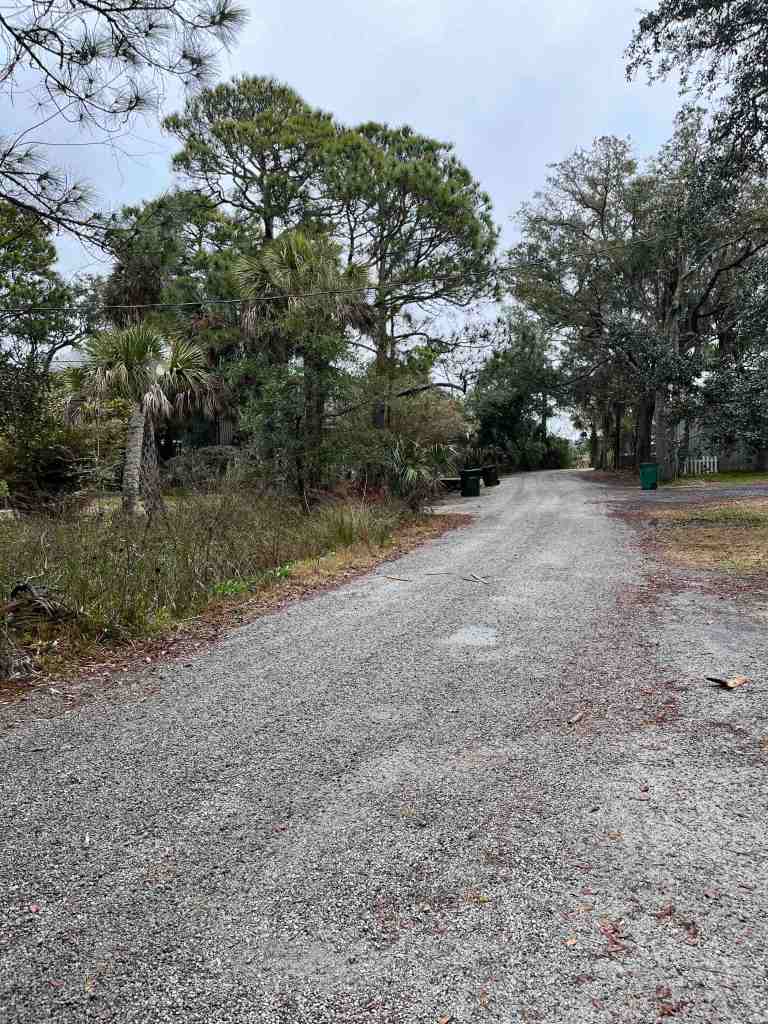My interest in street art commenced in 1975-7 when I lived next door to the artist Blue Sky. I can’t claim that Blue Sky and I were even acquaintances—don’t recall any conversations I had with him, meaningful or otherwise. We merely nodded and smiled as we passed, coming and going.
To me he was just another old hippie stubbornly clinging the ‘60s zeitgeist at the dawn of the disco age. Even though we were neighbors, I wasn’t aware that he was in the process of creating the iconic[1] mural Tunnelvision on the Federal Land Bank until shortly before its unveiling, which I attended with a few of my friends.[2]
What a contrast in worlds! I wanted to pass through that tunnel out of the otherwise soulless streets of Columbia into the wide-open spaces of that setting sun.
A quarter of a century later, visiting my son Harrison who was studying at Humboldt University, I once again encountered graffiti that blew my mind. The building, originally a department store, stood in the Old Jewish quarter in East Berlin on Oranienburger Straße. After reunification, a group of artists moved into the building as squatters. Harrison frequented a bar in the building that once held French prisoners during WW2. For whatever reason, the mural, with its marching African army or conga line and smiling spermatozoa, thrilled me.
Of course, the remaining sections of the wall that had not been torn down also became media for graffiti artists.
So, I became interested in street art, in commissioned murals as well in the renegade productions of spray-can-wielding night painters like SEEN, the so-called Godfather of Graffiti. Whenever we visit an urban area, my wife Caroline, who wrote her master’s dissertation on outsider art, seeks out graffiti and murals, and I am more than happy to tag along.
Thus,[3] over a long weekend in Atlanta celebrating stepdaughter Brooks’ thirteenth birthday, we wandered over to the High Museum to check out the KAWS exhibition, which Caroline enthusiastically embraced, pointing out to her less visually astute husband the ways in which KAWS’ work, a crown jewel of the genre, illuminates the work of all graffiti artists.
After seeing the exhibit, immediately I started paying closer attention to my physical surroundings, noting especially the shadows of trees on the sidewalks of Decatur, where we were staying. Even at night, these shadows created beautiful, life-enhancing patterns.
The next day, Caroline suggested we Uber to Cabbagetown, a funky Atlanta enclave with some of the finest street art in the city. Cabbagetown was originally a mill town east of Atlanta, and the ruins of the high wall of the mill span a half mile along Wylie and Tennelle Streets in an electrifying, eclectic array of divergent styles.[4]
Here are a couple of examples:
As we Ubered back to the house, we traversed the incredible Krog Street Tunnel, a place so spooky few people attended a Halloween festival staged there.
Obviously, visiting both the museum and Cabbagetown inspired me. I couldn’t wait to come home and create one of my collages.
Ta da!
So hail, museums, hail street art!
[1] I hate the overused word “iconic: however, in this context, I can’t think of a more accurate adjective.
[2] Although the Federal Land Bank refused to fund the project, they did grant Blue Sky permission to use the side of the building, that is, if he swore he wasn’t a communist (Wikipedia).
[3] A creaky looking old word that when uttered out loud sounds so cool, a sibilant hiss of a transition.
[4] Check out Day Trip Queen’s excellent overview of Cabbagetown art: https://daytripqueen.com/cabbagetown-street-art/
